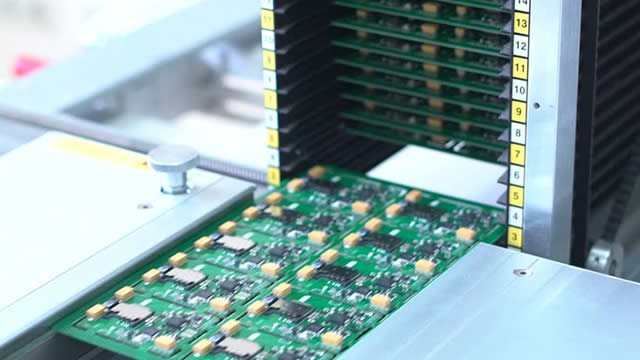NVIDIA vs AMD: A Detailed Analysis of the Better Investment Choice in the Data Center Computing Market
The data center computing market has seen a significant surge in demand due to the increasing adoption of artificial intelligence (AI), machine learning, and deep learning technologies. Two major players in this market are NVIDIA and AMD, each offering their unique solutions for data center computing. As an investor, it is crucial to understand the differences between these two companies and their offerings to make an informed decision. In this blog post, we will provide a detailed analysis of NVIDIA and AMD, focusing on their market position, products, and financial performance.
Market Position
NVIDIA:
NVIDIA is a leading technology company known for its graphics processing units (GPUs) and system on a chip units (SoCs) for the gaming and professional markets. However, the company has been making significant strides in the data center market with its GPUs being used for AI, machine learning, and deep learning applications. NVIDIA’s market position in the data center market is strengthened by its dominance in the gaming market, which provides a steady revenue stream and a large customer base for its data center products.
AMD:
AMD is a semiconductor company that competes with NVIDIA in the graphics processing unit (GPU) market. AMD has been making efforts to increase its presence in the data center market with its EPYC CPUs and Radeon GPUs. AMD’s market position in the data center market is growing, but it still lags behind NVIDIA in terms of revenue and market share.
Products
NVIDIA:
NVIDIA’s data center products include its GPUs, such as the A100 and V100, which are designed for AI, machine learning, and deep learning applications. NVIDIA’s GPUs are known for their high performance and power efficiency, making them popular choices for data centers. Additionally, NVIDIA offers software solutions, such as NVIDIA CUDA and NVIDIA DGX Systems, which provide a complete platform for AI and deep learning workloads.
AMD:
AMD’s data center products include its EPYC CPUs, which are designed for high-performance computing and are gaining popularity in the data center market due to their competitive pricing and high core count. AMD’s Radeon GPUs, such as the RX Vega and RX 6000 series, are also used in data centers for AI and machine learning applications. AMD offers software solutions, such as ROCm, which provide an open-source platform for AI and deep learning workloads.
Financial Performance
NVIDIA:
NVIDIA’s financial performance in the data center market has been strong, with revenue from its data center segment growing year over year. In its most recent quarterly report, NVIDIA reported a 70% year-over-year increase in data center revenue. The company’s strong financial performance is due to the increasing demand for AI and deep learning technologies and its dominant position in the gaming market.
AMD:
AMD’s financial performance in the data center market has been growing, but it still lags behind NVIDIA in terms of revenue and market share. In its most recent quarterly report, AMD reported a 64% year-over-year increase in data center revenue. The company’s growth in the data center market is due to the increasing popularity of its EPYC CPUs and its efforts to expand its presence in the GPU market.
Effect on Individuals
For individuals, the competition between NVIDIA and AMD in the data center market may not have a direct impact on their day-to-day lives. However, the advancements in AI, machine learning, and deep learning technologies, driven by these companies, may lead to new and innovative applications that benefit individuals in various industries, such as healthcare, finance, and education.
Effect on the World
The competition between NVIDIA and AMD in the data center market has far-reaching implications for the world. The increasing adoption of AI, machine learning, and deep learning technologies, driven by these companies, may lead to significant advancements in various industries, such as healthcare, finance, and education. Additionally, the data center market’s growth may create new jobs and economic opportunities, particularly in areas with large data centers, such as Silicon Valley.
Conclusion
In conclusion, the competition between NVIDIA and AMD in the data center market is an exciting and dynamic space to watch. Both companies offer unique solutions for data center computing and are making significant strides in the market. As an investor, it is essential to understand the differences between these two companies and their offerings to make an informed decision. For individuals, the advancements in AI, machine learning, and deep learning technologies, driven by these companies, may lead to new and innovative applications that benefit various industries and individuals. The data center market’s growth may also create new jobs and economic opportunities, particularly in areas with large data centers.
- NVIDIA and AMD are major players in the data center computing market.
- NVIDIA has a dominant position in the market due to its dominance in the gaming market and high-performance GPUs.
- AMD is growing in the data center market with its competitive pricing and high-performance CPUs and GPUs.
- Both companies offer software solutions for AI and deep learning workloads.
- NVIDIA’s financial performance in the data center market has been strong, while AMD’s is growing.
- The competition between NVIDIA and AMD may lead to new and innovative applications that benefit individuals and industries.
- The data center market’s growth may create new jobs and economic opportunities.





